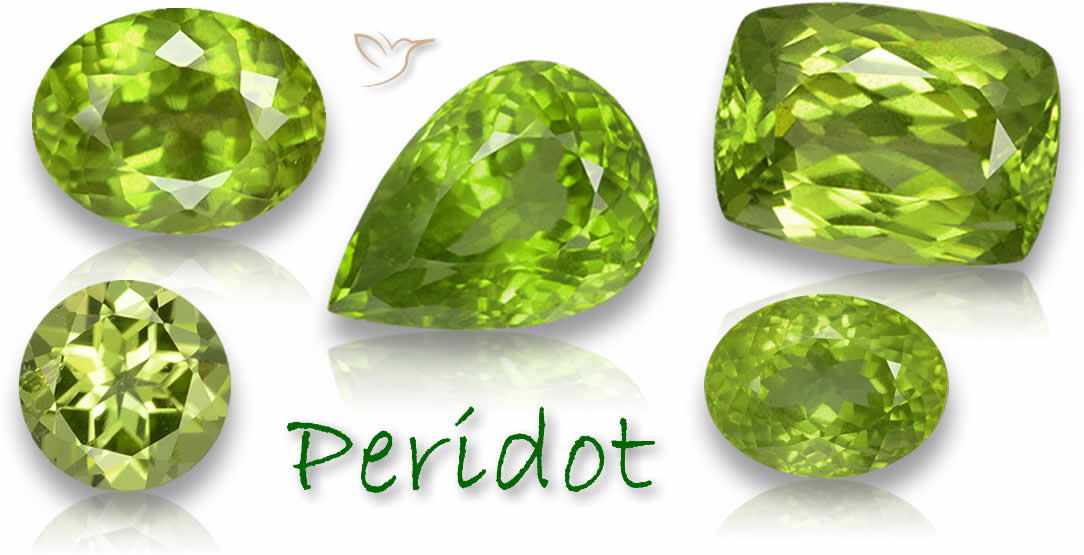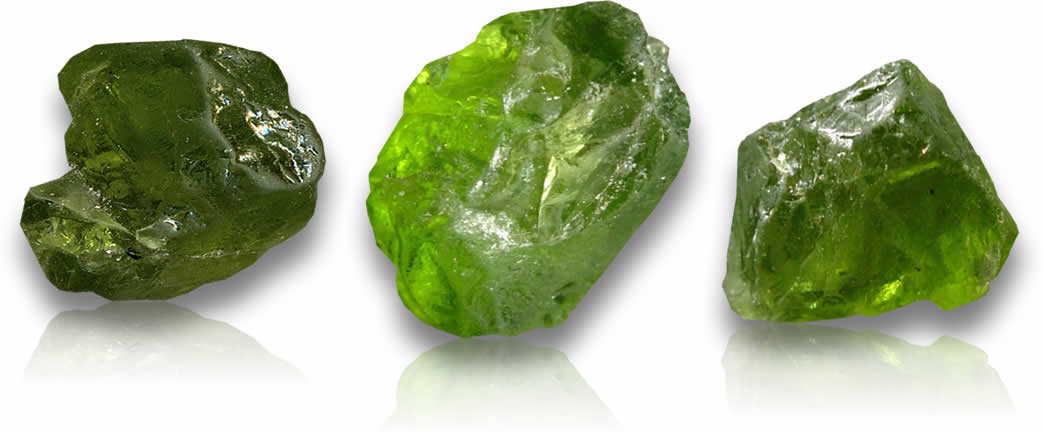Peridot: Properties, Value, Meaning, and Healing

Peridot: The Vibrant Green Gemstone - A Detailed Look
When folks picture eye-catching green jewelry, emeralds often come to mind first. But let's talk about another standout in that category: the peridot.
Peridot stands out for its lively yellowish-green color, though the exact tone shifts based on how much iron is in its makeup.
No matter the variation, this elegant yet underappreciated green stone has symbolized health, peace, and joy for ages. In short, it's like a perfect mix of cheer and harmony, bringing a touch of wellness to whoever wears it.

Quick Highlights
- Color spans from olive to yellow-green, with top pieces displaying a bright lime green tone.
- Hardness sits at 6.5 to 7 on the Mohs scale, offering good durability for daily use.
- Main sources include Pakistan, the USA, and China.
- Usual inclusions feature "lily pads" and tiny black mineral dots.
- Prices span $20 to more than $300 per carat, depending on color, clarity, and origin.
- Linked historically to light, purity, and renewal across cultures.
- Serves as the birthstone for August.
- Often appears in volcanic rocks and even meteorites at times.
- Commonly shaped into cushions and ovals to highlight the color.
- Has graced jewelry for over 4,000 years, ranking among the earliest known gems.
Healing Benefits and Uses
Beyond its captivating green hue, peridot connects to various healing perks that many find life-changing.
Thanks to that fresh green look, peridot ties into ideas of detox. People say it aids in clearing out toxins from the body. Dubbed a boost for top-notch health, it might ease stomach troubles, help cells renew for better immunity, and rev up metabolism.
But it's not just for internal fixes. Peridot also gets credit for handling skin issues like rashes. If you're after that youthful vibe, some believe it brings back a fresh, healthy shine to your skin.
With its summery feel, peridot naturally links to emotional and mental perks too. It could steady your moods and chase away envy, anger, or selfishness.
Slip it on, and you might feel an instant lift in joy, self-assurance, and calm – like a guiding light for positive shifts.
Disclaimer: The healing properties discussed here stem from traditional folklore and cultural beliefs, not from scientific evidence. Always seek advice from a qualified medical expert for health concerns.
Meaning of Peridot
The term “peridot” traces back to the French “peritot,” hinting at gold, likely due to its fancy yellowish-green with golden sparks. It also pulls from the Arabic “faridat,” just meaning gem.
By definition, it's a green semi-precious mineral, a form of olivine.
On a deeper note, peridot stands for steady minds, thriving relationships, and general wellness. Its earthy green evokes nature's calm.
This refined green gem with golden flecks is August's birthstone and the go-to for 16th anniversaries, sometimes even first ones.
History of Peridot
Peridot boasts a fascinating backstory reaching to the second millennium BC.
Egyptians uncovered it on Topazios, a volcanic isle in the Red Sea. Cleopatra adored its stunning green, calling it the “gem of the sun.” It stayed popular into medieval eras, though often confused with emerald.
After a dip in fame, the 1990s brought a comeback with finer finds in Pakistan. Now, peridot's more recognized, valued for healing or as a love token.
The name 'peridot' comes from the Arabic for gem, 'faridat'. Sometimes called "the poor man's emerald" or 'chrysolite' from the Greek 'goldstone'. It's among the oldest gems, noted as far back as 1500 B.C. The key ancient source was Zabargad (St. John) in the Red Sea, mined for over 3,500 years.
Types of Peridot
Peridot shines with its majestic green, often just called “green peridot.” But varieties exist, mainly by origin:
Changbai Peridot
From China's Changbai Mountains, this finer type shows deep green with lime hints, plus great clarity – making it pricier.
Pakistani Peridot
Mined in Kashmir near Afghanistan, these boast bright lime green with golden glows, standing out from Chinese ones.
Hunan Peridot
From southeast China, these have the classic yellow-green but excel in transparency and clarity.
Burmese Peridot
From Myanmar, these lead in larger sizes – ideal for bigger carat weights.

Peridot Quality Factors
All peridots have some sparkle, but for top-tier ones, consider these traits.
Color
Peridot sticks to one color family. Green depth ties to iron levels, ranging from yellow-green to olive or brownish. It shines best in daylight.
Color holds steady under lights. Deep, vivid green is prized, especially in stones over 5 carats.
Clarity
Clear peridots are common. Visible flaws like dark spots hit larger stones harder, dropping value.
Cut
Faceting suits its transparency. Shapes abound: ovals, baguettes, cabochons. Emerald and round cuts best showcase the hue.
Carat Weight
Jewelry pieces run 0.25 to 2 carats. Over 5 carats signals high value and luxury.
Peridot Gemstone Properties
Peridot is the gem form of olivine, a common mineral. It rates 6.5-7 on Mohs for hardness.
Made of iron and magnesium, iron gives the green – more iron, deeper color, making it idiochromatic.
It has clear cleavage, conchoidal breaks, refractive index 1.654-1.690, glassy luster, and high transparency.
Color comes from its core makeup, not impurities, so only green shades: light yellowish to dark brownish-green.
Peridot Value and Price
As a semi-precious stone, peridot isn't as scarce as emeralds, keeping prices lower.
Expect $50 to $500 per carat, varying by size, color, clarity. Bigger, brighter greens cost more.
| Quality | Size (Carat) | Approximate Price Range (per carat) |
|---|---|---|
| Low | 0.5 - 1.0 | $10 - $50 |
| Medium | 1.0 - 2.0 | $50 - $300 |
| High | 2.0 - 3.0 | $300 - $500 |
| Very High | 3.0+ | $500+ |
Sources and Mining Locations of Peridot
Unlike most gems from the crust, peridot forms deep in the mantle, rising via volcanoes or tectonics in igneous rocks.
Zabargad in the Red Sea was the prime ancient site, mined millennia ago, abandoned, then revived around 1900.
Common spots include:
- Myanmar
- Arizona
- Hawaii
- Nevada
- New Mexico
- Australia
- China
- Egypt
- Kenya
- South Africa
- Sri Lanka
- Saudi Arabia

Today, Pakistan (Kashmir, border areas) leads, with fine material from Myanmar and Vietnam.
Other sites: Australia (Queensland), Brazil (Minas Gerais), China, Kenya, Mexico, Norway, South Africa, Sri Lanka, Tanzania, USA (Arizona, Hawaii). China's now a top producer.
Identifying Peridot
Peridot is iron-magnesium silicate; color intensity from iron, with possible nickel or chromium traces. Not very resistant to acids, and on the softer side.
Rarely shows cat's eye effect with four rays. Strong double refraction distinguishes it – in thick stones, facet edges double up visibly.
Famous Peridot Gemstones
The biggest cut peridot, 319 carats from Zabargad, is at the Smithsonian in Washington D.C. Russia has peridots cut from a 1749 Siberian meteorite.
How to Care for Peridot and Peridot Jewelry
Good maintenance keeps peridot scratch-free and sparkling.
Top advice includes:
Separate from Other Gems
Avoid storing with harder stones to prevent scratches.
Limit Heat Exposure
Daylight's okay, but skip intense sun or heat sources. Fine for evening wear – it holds color in low light.
Extreme heat extends to water; avoid prolonged hot water, like in jacuzzis over 90F (35C).Clean with Soap and Water
Use mild soap, lukewarm water, and a soft cloth. Rinse well, dry on towel.
Note: Skip ultrasonic or steam; they can harm.
Store Safely
Options:
Peridot vs Other Gemstones
Peridot vs Green Tourmaline
| Characteristics | Peridot | Green Tourmaline |
|---|---|---|
| Color | Olive to Yellow-Green | VVarious Shades of Green |
| Hardness on Mohs Scale | 6.5 - 7 | 7 - 7.5 |
| Typical Source | Pakistan, USA, USA, China | Brazil, Afghanistan, USA |
| Typical Inclusions | Lily pads, Black spots | Needle-like inclusions |
| Price Range (per carat) | $10 - $500+ | $50 - $1,000+ |
Peridot vs Green Apatite
| Characteristics | Peridot | Green Apatite |
|---|---|---|
| Color | Olive to Yellow-Green | Green to Teal |
| Hardness on Mohs Scale | 6.5 - 7 | 5 |
| Typical Source | Pakistan, USA, China | Mexico, Brazil, Madagascar |
| Typical Inclusions | Lily pads, Black spots | Few or none |
| Price Range (per carat) | $10 - $500+ | $10 - $100 |
Frequently Asked Questions
What does the gift of peridot mean?
Gifting peridot might mark an August birthday or a 16th anniversary (or even a first). Beyond that, it could wish good luck or express love. Either way, it's a upbeat choice.
What is the meaning of peridot in astrology?
Peridot is August's birthstone, suiting Leo, Virgo, Gemini, Libra. In Vedic, it ties to Mercury and Venus, aiding smarts and bonds. Its bright look links to sun energy for cheer.
Disclaimer: Astrological meanings are rooted in traditional practices and are not supported by scientific validation.
What does peridot mean in marriage?
Known for friendship, it fosters relationship peace. Given for 1st or 16th years, it promises a joyful union sans envy or issues.
Is peridot a birthstone?
Yes, for August, sharing with spinel and sardonyx – a common birthday present.
How rare is peridot?
Not rare compared to emeralds; found worldwide, explaining modest prices.
Is peridot and chrysolite the same?
No, though sometimes called chrysolite historically, which covered greens like peridot, chrysoberyl, topaz.
Wrapping Up on Peridot
Peridot stands apart with its lively greens and yellow touches. Symbolizing positivity and harmony, it's a great fit for jewelry lovers.

